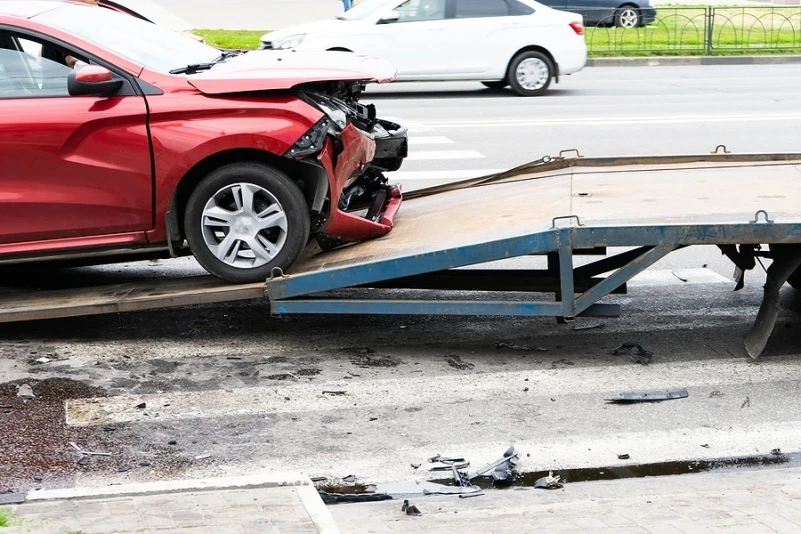How to Handle Personal Injury Claims Involving Multiple At-Fault Parties

After an accident, determining who is at fault is one of the first steps in pursuing a personal injury claim. In many cases, there is a single negligent party. But sometimes, more than one person, company, or entity may have played a role in causing your injuries. When multiple parties are at fault, it can make the claims process more complex—but also more important to handle carefully.
If you were injured in a crash on I-4, a construction zone accident, or a multi-vehicle pile-up near downtown Orlando, understanding how to deal with multiple at-fault parties can help you protect your rights and recover the compensation you need.
What It Means When More Than One Party Is Responsible
In legal terms, this situation involves shared liability. That means two or more individuals or companies acted negligently and contributed to the accident. Each one may be held financially responsible for a portion of your damages.
For example, you might be rear-ended by one driver, who was then pushed into your vehicle by a second driver who failed to stop in time. Or you might slip and fall at a retail store because of a wet floor, while a cleaning company contracted by the store also failed to post warning signs.
In both cases, more than one party made a mistake. Each could share responsibility for what happened.
Florida’s Law on Comparative Fault
Florida follows a modified comparative negligence system. This means that if you are partially at fault for the accident, your compensation can be reduced based on your percentage of fault. As of 2023, if you are found to be more than 50 percent responsible, you cannot recover any damages.
But when dealing with multiple defendants, the focus shifts to how fault is divided among them. Each party is assigned a percentage of fault based on their role in the incident. This process is important because it affects how much each party pays and how your total compensation is calculated.
Examples of Cases with Multiple At-Fault Parties
Many types of personal injury cases can involve more than one liable party. Here are a few examples that are common in Orlando:
-
Multi-vehicle collisions: These often happen on highways or in areas with heavy traffic. It can be difficult to determine who started the chain reaction.
-
Commercial truck accidents: The driver, trucking company, vehicle manufacturer, or maintenance crew could all be partly to blame.
-
Construction site injuries: Contractors, property owners, and subcontractors may each bear some liability.
-
Product liability cases: A defective product could result in claims against the manufacturer, distributor, or even the retailer.
-
Premises liability incidents: Multiple businesses operating on a shared property might each share fault for failing to maintain a safe environment.
In each case, a thorough investigation is required to identify everyone who may be responsible.
Why Identifying All Liable Parties Matters
If you only file a claim against one party, you may not recover the full value of your losses—especially if that party has limited insurance or assets. By identifying all parties who contributed to the accident, you improve your chances of recovering full compensation.
Each defendant may have their own insurance policy or legal representation. This creates a more layered negotiation process, but it also allows your attorney to pursue multiple sources of coverage.
In high-cost injury claims involving hospital bills, lost wages, and long-term disability, this can make a significant difference.
Gathering Evidence and Proving Shared Fault
When more than one party is involved, documentation becomes even more important. Your legal team will need to build a detailed timeline of what happened and collect evidence such as:
-
Police reports
-
Surveillance or dashcam footage
-
Witness statements
-
Vehicle damage assessments
-
Safety logs or maintenance records
-
Expert analysis, such as accident reconstruction reports
Each piece of evidence helps determine who acted negligently and how much that negligence contributed to your injuries. In some cases, expert witnesses may be used to provide insights into how the actions of each party caused or worsened the harm.
How Insurance Companies Respond
When multiple parties are involved, their insurance companies may try to shift blame to each other—or to you. This back-and-forth can delay the claims process and create confusion. They may also offer low settlements in hopes of resolving their portion of the claim without admitting too much responsibility.
This is one reason why legal representation is especially important in these cases. An experienced attorney can push back against tactics designed to minimize payouts and negotiate from a position of strength. They’ll ensure your injuries are fully accounted for and that any settlement reflects the total impact on your life.
Filing a Personal Injury Lawsuit
If settlement negotiations stall, you may need to file a lawsuit. When multiple defendants are named, the court will decide how much fault each party bears. In Florida, each defendant is generally only responsible for their share of the damages unless certain exceptions apply—such as cases involving intentional harm.
Once the court issues a judgment, each party is required to pay their portion. Your lawyer will then work on collecting those funds, which may come from insurance policies or directly from the defendants, depending on the case.
Common Challenges in These Claims
Claims involving multiple at-fault parties can be more difficult to resolve due to:
-
Disputes over how fault is divided
-
Delays in gathering documents from different sources
-
Multiple insurance companies offering conflicting narratives
-
Defendants denying involvement or blaming each other
-
The need for more detailed expert analysis
Despite these challenges, these cases can result in a better outcome for injured victims when handled properly. A thorough legal strategy and strong evidence are key.
What You Can Do After the Accident
If you suspect more than one party may be responsible for your injuries, here’s what you can do to help your claim:
-
Call the police and get an official accident report
-
Take photos or videos of the scene, including all vehicles or hazards
-
Get names and contact details of all drivers, businesses, or witnesses involved
-
Seek immediate medical attention and keep records of treatment
-
Avoid discussing fault at the scene or online
-
Contact a personal injury lawyer in Orlando as soon as possible
Time matters. Florida’s statute of limitations generally gives you two years to file a personal injury lawsuit, but evidence can disappear long before that.
Conclusion
Accidents involving multiple at-fault parties require a different approach than standard personal injury claims. These cases are often more complex, but they also offer more opportunities to recover full compensation—if handled properly.
If you’ve been hurt in a crash, slip and fall, or other incident in Orlando where more than one person or business may be responsible, don’t navigate the process alone. A skilled attorney can help you gather evidence, identify every liable party, and fight for the compensation you deserve. The sooner you take action, the more you can do to protect your rights and your future.

 Call Us Today - It's Free
Call Us Today - It's Free